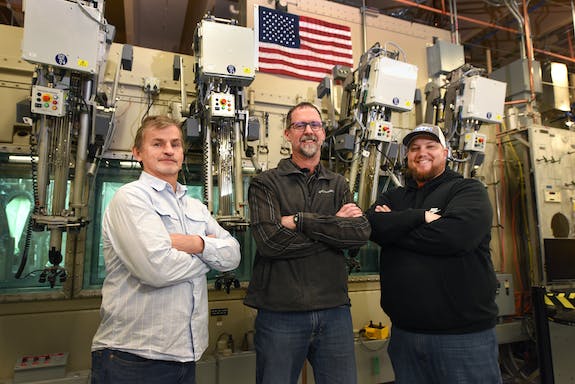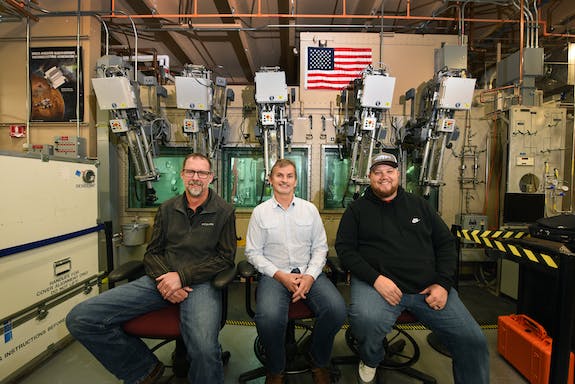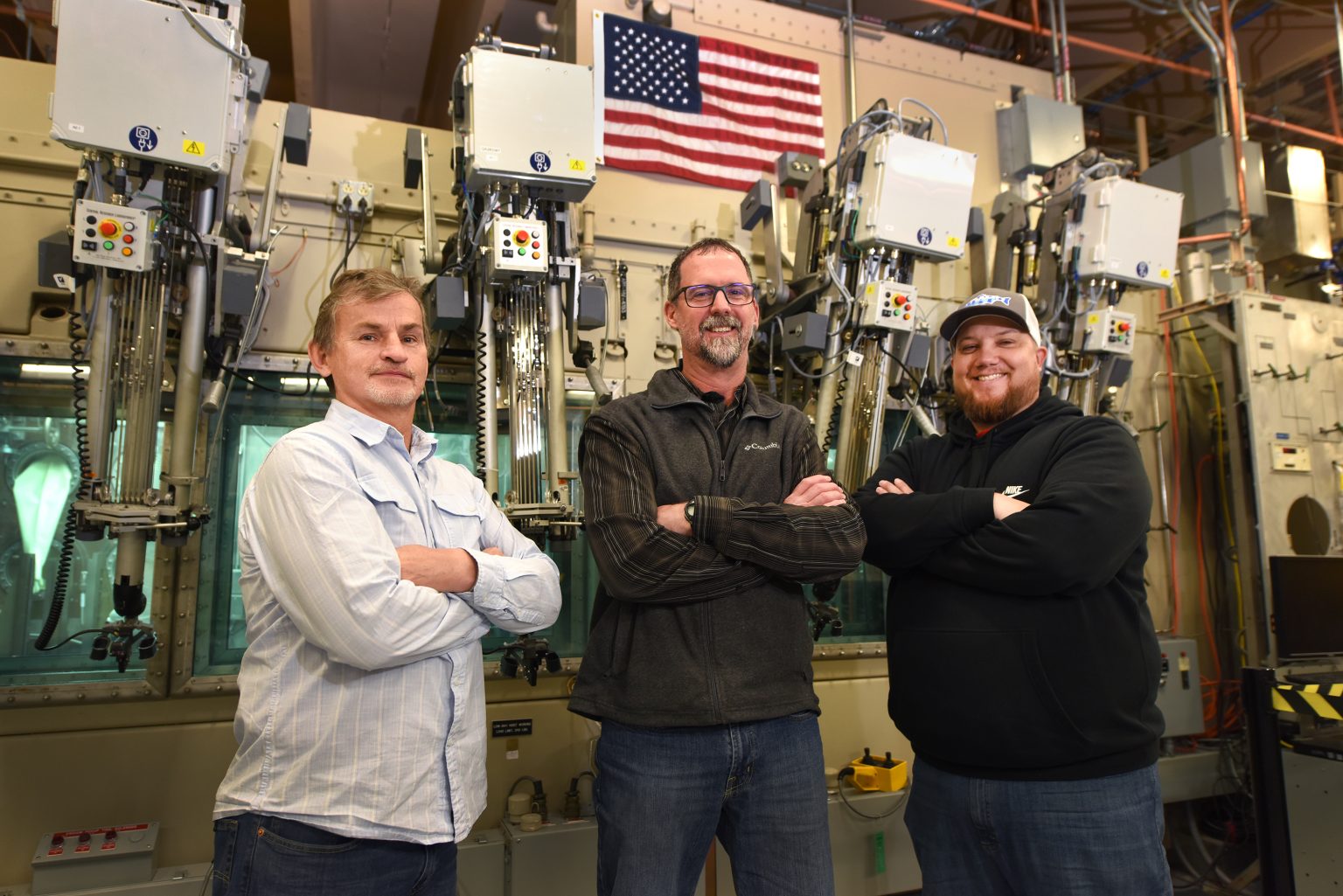They’ve stayed in the same spot for more than a decade, but their work has traveled to Pluto and beyond, and landed on the surface of Mars.
Bob Gomez, Courtney Swassing and Jon Bradley have spent most of their Idaho National Laboratory (INL) careers in the Space and Security Power Systems group, which assembles and tests Radioisotope Power Systems such as Multi-Mission Radioisotope Thermoelectric Generators (MMRTG) and other Radioisotope Thermoelectric Generators (RTGs) for use in remote and harsh environments, principally space.
Gomez and Bradley have been part of the program since the beginning, when it was moved from Mound Laboratories in Ohio to INL’s Materials and Fuels Complex (MFC) in the early 2000s. Swassing joined the team in 2007.
They each came on board at different times and had different motivations for joining the group, but all said there’s nothing they’d rather do.

“There’s pressure because you know it has to power a $2 billion space mission,” Gomez said. “But it’s so cool to be part of this.”
Bradley grew up in Shelley, Idaho, and knew the lab was a good place to work when he started as a temporary employee in the mailroom.
“It was a job,” Bradley said. “It was a foot in the door.”
The longer he stayed, the more he realized there were opportunities behind other doors at MFC. He spent 12 years in materials handling before he took a job as an operator with the Space and Security Power Systems group in 2004. He was an operator and then technical lead until 2016, when he became shift supervisor – his current role.
Gomez grew up in the Boise area and was serving what would become a nine-year stint in the U.S. Navy when he heard about the historic safety tests performed at Idaho’s Experimental Breeder Reactor-II in 1985.
“I thought, ‘this is a place I want to work,’” Gomez said.
He joined what is now INL in 1994 as a hot cell operator at the Fuel Conditioning Facility. He began working on space power systems in 2004, and outside of a short time as a shift supervisor at other facilities, he’s been with the group since. He has served in a variety of roles, from foreman to shift supervisor to now nuclear facilities manager.
Bradley and Gomez were part of the team that assembled and tested the first space power system at INL, for use on the 2006 Pluto New Horizons mission. It was an exciting, and stressful time. In roughly two and half years, a small group led by Director Steve Johnson had to build a facility, put together a staff, and then assemble and test an RTG. The facility was finished in September 2004, and the power system was shipped to Florida around Halloween in 2005.

It was an amazingly tight deadline, but New Horizons launched on schedule in January 2006.
“There was significant overtime and a lot of nervousness,” Gomez said. “We were doing this for the first time so we were kind of self-taught.”
Swassing is the “new” guy of the trio. The Pocatello, Idaho, native started working on space power systems in 2007 as an operator before becoming a technical lead. He will soon qualify as a shift supervisor.
He missed the first power system build, but has been closely involved in assembly and testing of the MMRTG for the Mars Curiosity rover in 2012 and the current Mars 2020 mission, another rover that will explore the Red Planet.
Because there is a long gap between missions, the team spends a lot of time training. They study the procedures to ensure they are optimal, and practice the various steps of assembly and testing so their actions become second nature.
“The training process can wear on you,” Bradley said. “We can get on each other’s nerves and it can get tedious. But Operations, Engineering and Quality Assurance are all training together. It’s not someone telling us what to do. That’s the cool part.”
But there’s a big difference between practice and the real thing.
Swassing said when he first joined the team, he was told that working with hot fuel is a unique challenge that can’t be replicated in training. The internal temperature of the MMRTG fuel reaches 1,300 degrees Fahrenheit, and it takes special equipment and an attention to detail to work with safely.
“I was thinking, ‘It can’t be that hot,’” Swassing said. “Then when I first worked with it, I was like, ‘This is HOT. Now I know why they told me that.’”
Once that hurdle is overcome, much of the work done by Bradley, Gomez, Swassing and the other members of the team has remained the same. The power system is a fairly simple device that needs no moving parts to turn heat from the decay of Plutonium-238 into electricity using thermocouples.
The process is well-defined and the task at hand is well-understood by all. That doesn’t mean problems don’t arise from time to time.
“They’re all built to the same specs, but each has presented its own set of issues and obstacles,” Gomez said. “It certainly isn’t easy or boring.”
How could it be? The result of their hard work is exploring the surface of Mars and traveling to Pluto and beyond – places never visited by man-made objects. Work on the latest MMRTG is nearing completion with an expected launch in late July or early August. There are still long days and plenty of stress before it reaches Mars. But to these guys, it’s all worth it.
“It’s so rewarding to know you’re one of a handful of people who had their hands on something that goes to space,” Bradley said. “That’s pretty cool.”





